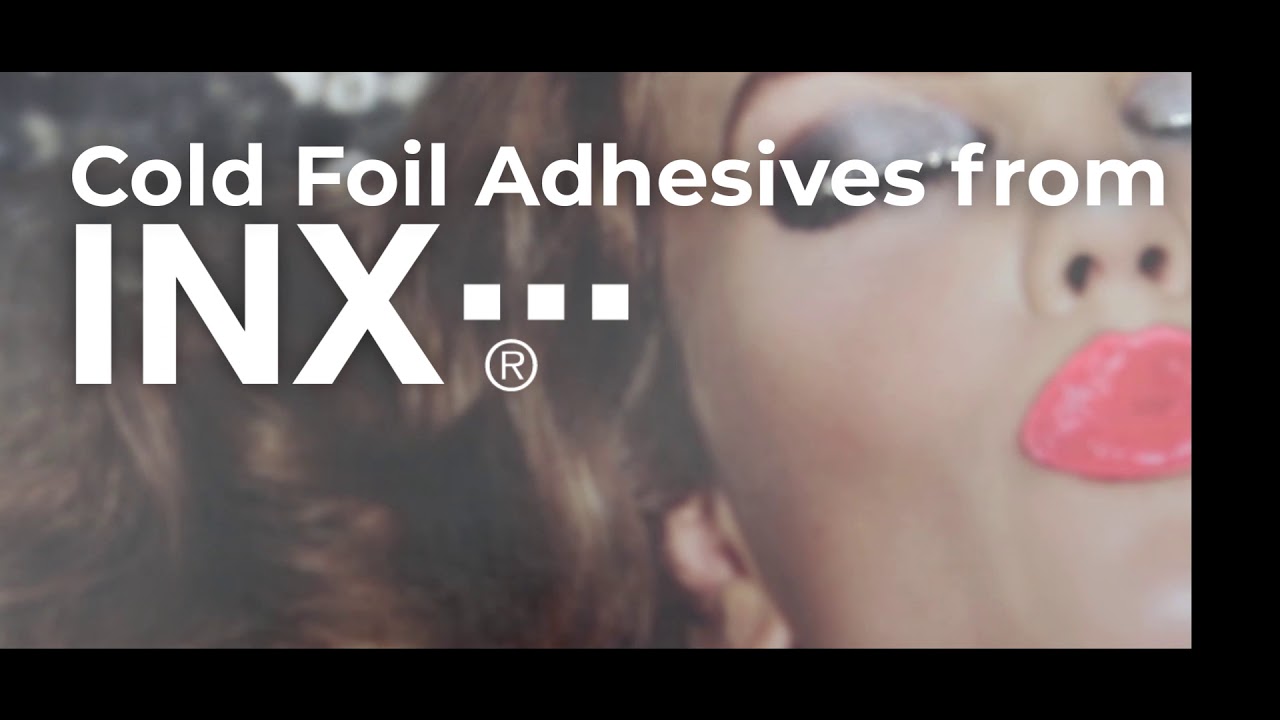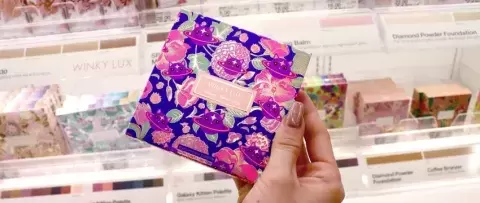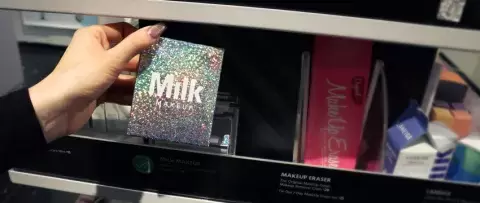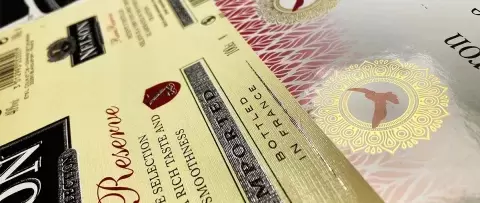Mastering the Art of Foil Printing: A Complete Guide to Hot and Cold Techniques
Foil printing has become increasingly popular in the world of design and printing due to its ability to elevate visual aesthetics and add a touch of luxury to various projects. Whether you're creating high-end packaging, wedding invitations, business cards, or art prints, mastering the art of foil printing can take your designs to the next level. In this article, we'll delve into the advantages and intricacies of both hot and cold foil printing techniques, providing you with everything you need to know to create stunning foil-printed masterpieces.
What is Foil Printing?
Foil printing is the application of a thin layer of metallic foil to a substrate to give it a shiny, reflective, and metallic finish or image. The two types of foil used today are hot foil and cold foil. Cold foil is generally utilized on digital, flexographic, and lithographic presses while hot foil is applied offline with a stamping machine using platen dies. Most foil today consists of a thin film on a plastic carrier, comprising a release coating, lacquer, aluminum, and an adhesive layer. For hot foil, the adhesive is activated by heat. In contrast, cold foil uses an adhesive cured with LED or UV light.
The difference between hot foil and cold foil printing
Hot foil printing, also known as hot stamping or foil stamping, is a process that utilizes a heated die and pressure to transfer the metallic hot foil film onto a surface. The heat melts the adhesive on the hot foil film, which then adheres to the substrate. The foil film itself consists of multiple layers: a metallic foil layer, a color layer (if colored foils are used), a release layer, and an adhesive layer. When the heated die presses the foil film against the substrate—such as paper, cardboard, leather, or plastic—the heat causes the adhesive layer to melt. This melting action enables the foil to adhere firmly to the substrate in the pattern defined by the die. Once the foil is applied, it cools and solidifies almost immediately, ensuring that the metallic layer is securely anchored to the substrate. After the foil has cooled and adhered to the substrate, the plastic carrier film, which originally held the foil, is peeled away. The result is a sharp, metallic finish that adds a touch of elegance and durability to printed materials, often used for packaging, labels, business cards, and other premium products.
Cold foil printing is a modern alternative to traditional hot foil printing. Cold foil film is the same as hot foil film and consists of a release layer, carrier film, and the metallic layer which provides a shiny, reflective finish, often made of aluminum. The carrier film, typically made of polyester, supports these layers and is removed after the foil is applied to the substrate. However, with cold foil film, the adhesive is applied on press, and does not require heat. Instead, a UV curable adhesive is applied to the substrate using standard printing techniques, much like ink. The cold foil film is dispensed from a roll that is mounted inline on the press, and laid over the printed substrate. A pressure roller then presses the foil onto the sheet, and a UV light cures the adhesive, anchoring the foil to the surface. After the foil is secured, the plastic carrier film is peeled off and wound onto a roll. This process allows for very detailed images since the adhesive can be printed like standard ink.
The Advantages of Hot Foil Printing
Superior Metallic Finish
Hot foil printing delivers a luxurious and vibrant metallic finish that exudes elegance and sophistication. The process involves applying heat and pressure to transfer metallic or pigmented foil onto the substrate, resulting in a shiny and reflective surface.
Wide Range of Colors and Finishes
Hot foil printing offers a diverse range of foil colors, including classic gold, silver, bronze, and an array of vibrant pigmented foils. Additionally, various finishes such as matte, gloss, holographic, and pearlized are available, providing endless possibilities for customization.
Depth and Texture
Hot foiling also can emboss or deboss the substrate. This allows for the foiled image to stand out as it's typically raised, providing texture and depth.
Versatility in Substrates
Hot foil printing can be applied to a wide range of substrates, including paper, cardstock, plastic, leather, and more. This versatility allows for the creation of stunning foil-printed products such as business cards, packaging, invitations, and labels.
Enhanced Durability
The foil used in hot foil printing is highly durable and resistant to wear and tear, ensuring that the printed designs maintain their brilliance and luster over time. This makes hot foil printing suitable for applications requiring long-lasting impact and durability.
Offline Process
Cold foil printing will require the use of two print stations on a printing press. One print station will be used to apply the cold foil adhesive, and a subsequent station will have a cold foil module permanently installed on it. Some presses may not have enough print stations to accommodate the cold foil process, requiring the use of an offline hot stamping process.
The Hot Foil Printing Process
- Design Preparation: Start by creating your design using vector-based software such as Adobe Illustrator. Convert your design into a format compatible with the foil stamping machine, typically a vector-based file with outlines or paths.
- Foil Selection: Choose the type of foil you want to use for your project. Metallic foils come in a variety of colors, including gold, silver, copper, and more. Pigmented foils offer a broader range of colors, allowing for greater customization.
- Die Creation: A custom metal die or stamp is created based on your design. The die is heated and pressed onto the foil, transferring the foil onto the desired surface.
- Heat and Pressure Application: Place the foil over the substrate (paper, cardstock, etc.) and position the die on top. Apply heat and pressure using a foil stamping machine, causing the foil to adhere to the substrate in the desired areas.
- Finishing Touches: Once the foil has been transferred, remove the excess foil, leaving behind a shiny, metallic design.
Advantages of Cold Foil Printing
Cost-Effectiveness for Large Production Runs
Cold foiling is much faster than the platen hot stamp system utilized for shorter runs and does not require the expensive engraved cylinders used in the rotary hot stamp process for longer runs. Cold foil printing offers significant cost savings compared to hot foil printing. By utilizing an adhesive and inline printing process, cold foil printing eliminates the need for expensive dies and setup costs associated with hot foil printing. Cold foiling can also save costs and increase options in substrate selection for a print job. Metallized substrates do not have to be used to achieve a metallic image. Additionally, when using metallized substrates, the printer must print opaque white to cover areas that do not require a metallic finish. Utilizing cold foil printing can allow a printer to achieve the desired metallic image on an often-cheaper substrate, without high usage of an opaque white ink.
Inline Printing Capabilities
Cold foil printing can be seamlessly integrated with other printing processes such as offset and flexography, allowing for inline application of foil during the printing process. This results in increased efficiency, reduced production time, and enhanced workflow management.
Reduced Environmental Impact
Cold foil printing utilizes UV curable adhesives and inline application techniques, minimizing waste and environmental impact compared to traditional hot foil stamping methods. Additionally, cold foil printing requires lower energy consumption and generates fewer emissions, making it a more sustainable option. Embrace the potential of both methods to enhance your creative projects and leave a memorable mark on your audience
Versatility in Design Options
Cold foil printing offers flexibility in design options, allowing for dynamic and creative effects such as overprinting, gradations, and transparent foil effects. Cold foil manufacturers offer holographic, diffractive, and refractive foil options. This versatility enables designers to experiment with innovative concepts and produce visually striking results. As you typically print on the foil, a full color spectrum is available. The flexo, screen, and digital processes allow for heavy layers of adhesive to mimic the raised look of hot foil.
Consistent Color Reproduction
The foil quality has improved to the point where it is difficult to tell whether the foil was applied by the hot stamp or cold foil process. Cold foil printing ensures consistent color reproduction and foil adhesion across large production runs, maintaining quality and uniformity throughout the printing process. This reliability is crucial for brands seeking to maintain brand consistency and integrity across various printed materials.
The Cold Foil Printing Process
- Adhesive Application: Start by applying a special energy curable (LED or UV) adhesive to the desired areas of the substrate using a printing plate or cylinder. The adhesive acts as a bonding agent for the foil.
- Foil Transfer: After the adhesive has been applied, the foil is unwound from a roll and pressed onto the substrate during the printing process. The foil adheres to the adhesive-coated areas, creating a metallic finish.
- UV Curing: Once the foil has been transferred, UV/LED lamps cure the adhesive, ensuring a strong and durable bond to the substrate. In the flexographic process, adhesives are available to pre-cure prior to nipping the foil, ensuring less dot spread and finer detail.
- Finishing Touches: After curing, excess foil is removed simultaneously with the plastic carrier film, leaving behind a crisp and shiny foil-printed design.

Choosing the Right Foil Printing Technique
Both hot and cold foil printing techniques offer unique advantages and are suitable for different applications. Hot foil printing is ideal for luxurious branding. Cold foil printing, on the other hand, is more cost-effective for small to large production runs and is done inline on press.
Tips for Success:
- Choose high-quality foils and substrates for the best results.
- Optimize your design for hot foil printing by using bold, clean lines and avoiding intricate details.
- Work with suppliers to ensure proper foil adhesion and color consistency.
- Work with experienced printers who specialize in foil printing to achieve professional results.
Conclusion
Mastering the art of foil printing requires a combination of skill, creativity, and attention to detail. Whether you choose hot foil printing for its elegance and versatility or cold foil printing for its efficiency and cost-effectiveness, understanding the techniques involved is essential for achieving stunning results. By following the outlined guidelines and experimenting with varied materials and methods, you can elevate your designs and create captivating foil-printed masterpieces that leave a lasting impression.












